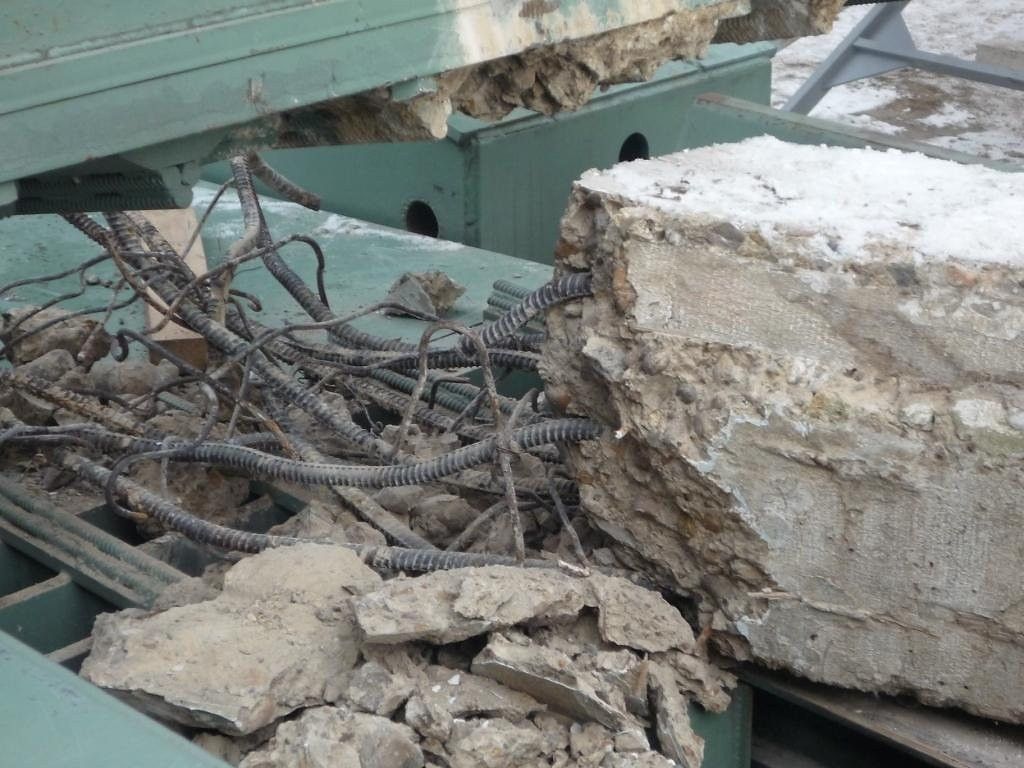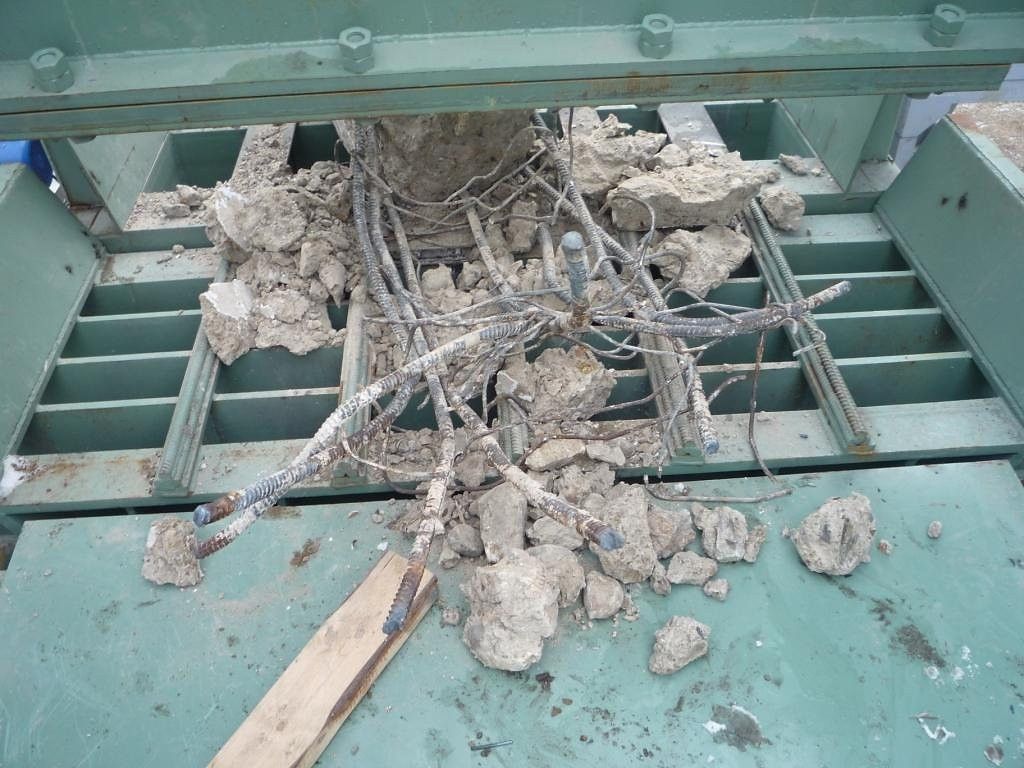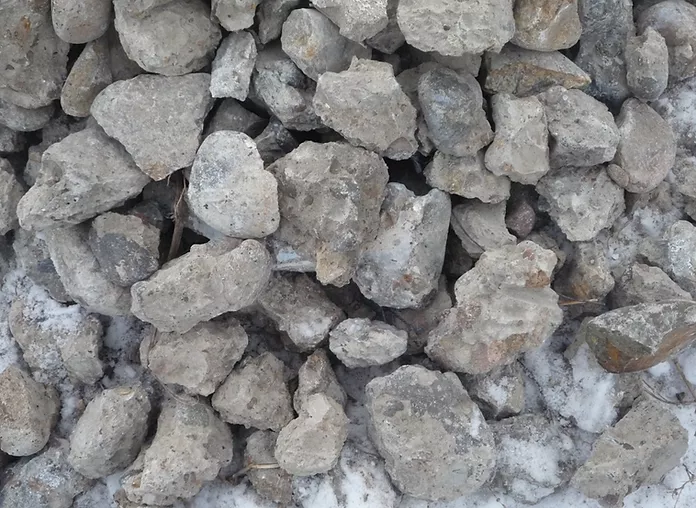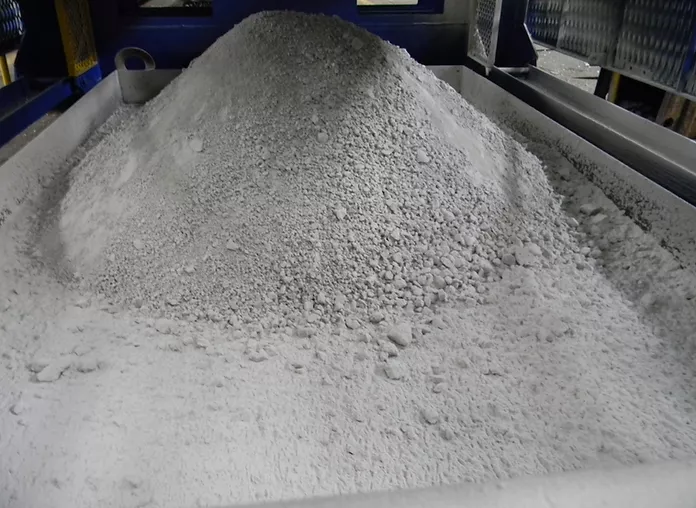TECHNOLOGY
Recycling of construction waste
Every year, the volume of commercial and industrial construction grows.
Industrial facilities are gradually withdrawing from the centers of major cities. Dismantling and demolition of facilities have led to the fact that landfills and landfills do not cope with the growing flow of construction waste.
Loopholes in the law lead to the emergence of unauthorized landfills that cause irreparable environmental losses.
The way out is to use modern recycling technologies.
OBUKHOVSKAYA INDUSTRIAL COMPANY Ltd is engaged in creation and promotion of modern ecological technologies for mechanical processing of the main types of large construction waste.
What is Recycling?
Recycling is the process of returning a different type of production waste into circulation or reusing it. It allows more rational use of irreplaceable natural resources and minimizes environmental damage from production activities.
Recycling is especially necessary for large-sized waste generated during the dismantling of buildings and structures or in the production of reinforced concrete products.
Recycling of construction waste is mainly the processing of concrete, reinforced concrete and brick. The result is a secondary crushed stone, a metal that used to be an armature, and secondary sand.
OBUKHOVSKAYA INDUSTRIAL COMPANY Ltd offers an innovative non-waste technology for processing reinforced concrete and fragments of brickwork of large dimensions.
The uniqueness of the technology is that one unit (line) processes large pieces of concrete, reinforced concrete or brick to the rubble of a certain fraction, pure metal and sand.
Secondary crushed stone
Secondary crushed stone is rubble, obtained as a result of processing of concrete or brick scrap.
There is an erroneous opinion that concrete is not suitable for recycling. However, scientific studies involving prototypes prove that the use of concrete gravel in the creation of new concrete improves its some quality characteristics.
The company closely cooperates with Russian scientists. Materials of research of properties of secondary building materials of the Penza State University of Architecture and Construction can be downloaded here.
Self-compacting concrete, obtained on the basis of products of crushing concrete scrap, can be used for the production of most structures of modern buildings and structures.
Modern technology of processing of concrete waste makes it possible to obtain an inexpensive aggregate with the granulometric composition necessary for the production of a new highly effective variety of concrete – self-compacting concrete.
Technologies of secondary crushed stone utilization
When crushing concrete and reinforced concrete structures, about 40-50% of coarse fraction (5-40 mm), 20% of fine fraction (2.5-5 mm) and 30-40% of fraction 0-2.5 mm are formed.
Fractions of concrete rubble 5-40 mm and 2.5-5 mm can be used as a filler for concrete. Fractions 1,2-2,5 mm are perfect for use as a padding in road construction.
Scrap of silicate brick is used to produce stone flour and fractional gravel. Stone flour – ground material up to specific surface Sud 1000-2000 cm2/g.
In full volume with the remnants of the solution part can be used in the production of silicate bricks, foam concrete and autoclave concrete (wall blocks), which saves up to 50% of raw materials. At the same time, the quality of the materials obtained is not reduced. The second direction of use is the production of foam concrete and aerated concrete. This will reduce the use of raw materials by 30-40%.
Scrap of ceramic bricks goes to get stone flour and fractional rubble.
Fractional rubble 0-5mm, 5-10mm, 10-20mm, 20-40mm is used as a filler for keram-concrete blocks of wall materials, for the production of backfill fillings, for backfilling of pedestrian paths in landscape architecture, for piling temporary roads for preparatory works before construction .
Stone flour from a brick battle with Sud 1000-2000 cm2/g is expediently used as a component in the manufacture of a ceramic block. The flow rate is 10-15% (60-70 kg/m3) of the sand consumption (600-650 kg/m3). The total consumption of portland cement is 310-400 kg/m3. Blocks have a strength of 50-100 kg/cm2, density 160-1800 kg/m3.
Main applications of secondary crushed stone and sand:
- coarse aggregate in self-compacting concrete;
- concrete and concrete products – blocks of the CFC, the elements of storm sewers, wells, etc.;
- strengthening of soil-dumping of slopes, embankments, Parking lots;
- when laying and repair of water supply and sanitation systems;
- road construction – as the lower layer of roads that do not have the status of Federal roads;
- backfilling under paved area, sidewalks;
- as a basis (“pillow”) for the Foundation of buildings and structures;
- in the form of foam concrete and aerated concrete filler;
- paving slabs, curbs, stairs;
- landscape architecture, decor elements, fences;
- as a substitute for soil for backfilling foundations, pits.
You can order our equipment and technologies
by phone: +7(831) 295-50-61,
by writing to e-mail: drobzavod@mail.ru,
through the order form.





